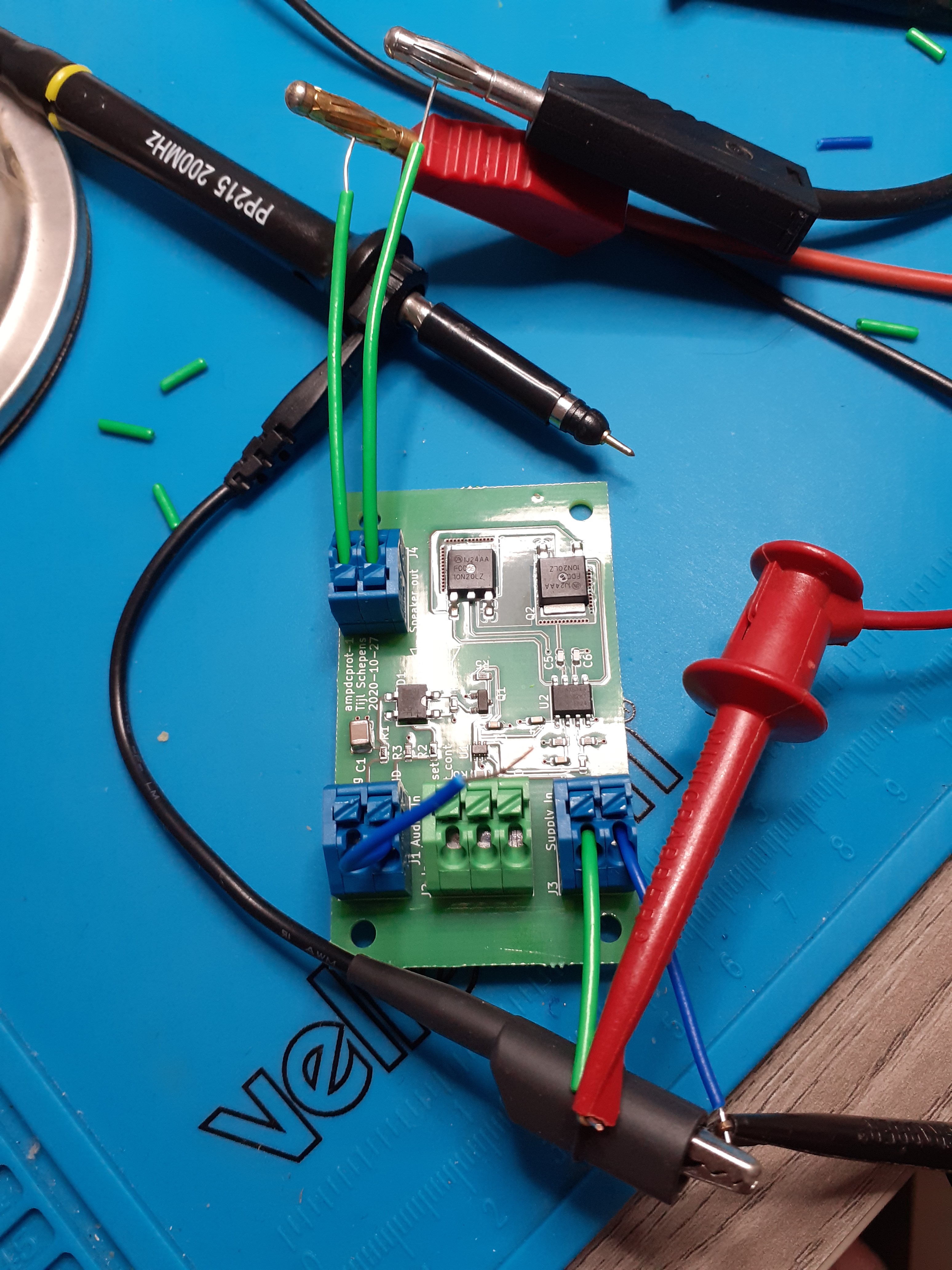-
Doing some measurements
02/28/2021 at 15:45 • 0 commentsMy initial measurements show that my calculations are off because of some wrong assumptions.
From the datasheet of the NSS40201 I assumed that the Vbe turn on voltage would be 0.7 V. But that is a typical value with an Ic of 1 A. As we have only 50 uA flowing through Ic it is impossible to deduct the turn on voltage from the datasheet.
After some basic measurements I found that the turn on voltage is around 460 mV. After substituting this in the formulas, the calculated values now match my measurements.
Initially I calculated that the transistor would turn on at a DC-voltage of 9 V. But with the new Vbe voltage the calculated value of 7 V now matches the measured turn-on voltage of 7.115 V.
This turn on voltage is the voltage that needs to be applied to the input of the circuit to get the collector voltage of the transistor below 0.3xVcc. This 0.3xVcc is the votlage at which the NC7SZ175 will reset its output and disable the mosfets.Another thing that could not be deducted from the datasheet is the forward voltage drop of the diode bridge. It only shows graphs with a forward current starting at 10 mA. It seems that at 100 uA like we have in our circuit the forward voltage drop is around 0.49 V.
The Si8751 operates as expected. When setting the D-type flip-flop it turns on the transistors and when the flip-flop is reset the transistors turn off.
I also did some measurements to see when the transistors get hot. At 2 A continuous current the transistors already get too hot to touch. It seems that the FDD10N20LZTM has a too high Rdson.
So I decided to replace the transistors with the NTD6416ANL. This mosfet has an Rdson which is more than 3x lower and the price is acceptable. There are of course other transistors with even lower Rdson but they are expensive...
Re-doing the measurements with the new transistor yielded that at 2 A the transistors don't heat up. At 4 A they get quite hot. But I stopped the measurement there as my clips started melting at this high current level O.oWith my oscilloscope I measured how fast the transistors turn on. One channel is connected to the clock input of the D flip-flop while the other is connected to a second power supply which is connected to the switching mosfets. Once the mosfets turn on, they short the supply.
![]()
The transistors start turning on after 190 us. After around 1 ms the transistors are switched fully on. Note that this measurement also includes the delay of the NC7SZ175 and not only the delay of the Si8751.
For the next measurement I connected one probe to the IN-pin of the Si8751. The switching mosfets are connected to a power supply set to 30 V in series with a 330 Ω resistor. The probe is connected to the point between the mosfets and the resistors.
![]() This measurement yields that the Si8751 switches off the transistors after 26 us. This is in line with the specified maximum of 35 us in the datasheet.
This measurement yields that the Si8751 switches off the transistors after 26 us. This is in line with the specified maximum of 35 us in the datasheet. -
Assembling the PCBs
02/28/2021 at 10:08 • 0 comments![]()
![]() After receiving the PCBs and components from the good people at Aisler we can start assembling!
After receiving the PCBs and components from the good people at Aisler we can start assembling!
Using the stencil and a hot air gun it was quite easy to solder all the components. There are not small pitch or other difficult to solder components on the board.![]() Applying solder paste and reflowing everything.
Applying solder paste and reflowing everything.![]()
![]() For the connectors it seems that I made a mistake. I think I ordered the wrong ones as my footprint matches the datasheet.
For the connectors it seems that I made a mistake. I think I ordered the wrong ones as my footprint matches the datasheet.![]() The pins of the connector are swapped. So they do not fit...
The pins of the connector are swapped. So they do not fit...
The good news is that these connectors are easy to disassemble. All the parts are just pushed together and can be separated with little force and a pocket knife.![]() Now that the three parts of the connector are loose, we can just swap the pins. That way they fit into our connector footprint!
Now that the three parts of the connector are loose, we can just swap the pins. That way they fit into our connector footprint!
The green connector does fit, so I must have ordered a wrong one for the two pins variant.
Now that everything is soldered we can start doing some measurements on the board.![]()
I did some quick verification to see if I made stupid mistakes. On first sight it seems that the board works as expected. Now I can start to do some more in depth measurements!
Solid state DC speaker protection.
A small board to protect your speakers from unwanted DC-bias. Two N-channel mosfets are used instead of an expensive relay.
 Tijl Schepens
Tijl Schepens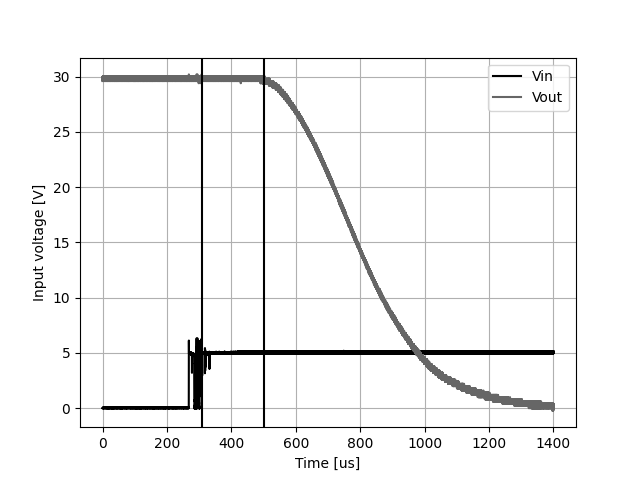
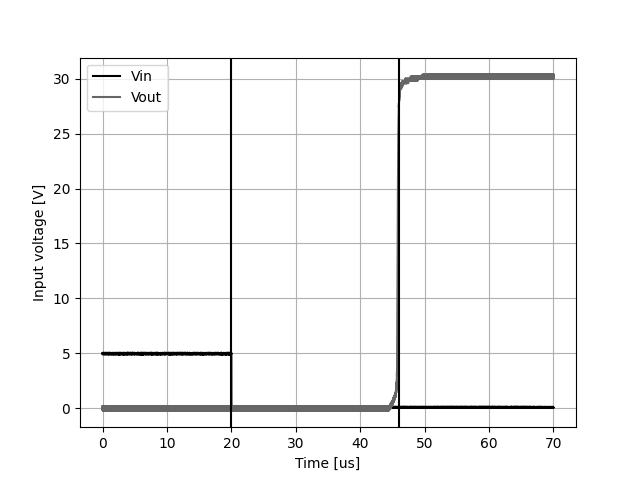 This measurement yields that the Si8751 switches off the transistors after 26 us. This is in line with the specified maximum of 35 us in the datasheet.
This measurement yields that the Si8751 switches off the transistors after 26 us. This is in line with the specified maximum of 35 us in the datasheet.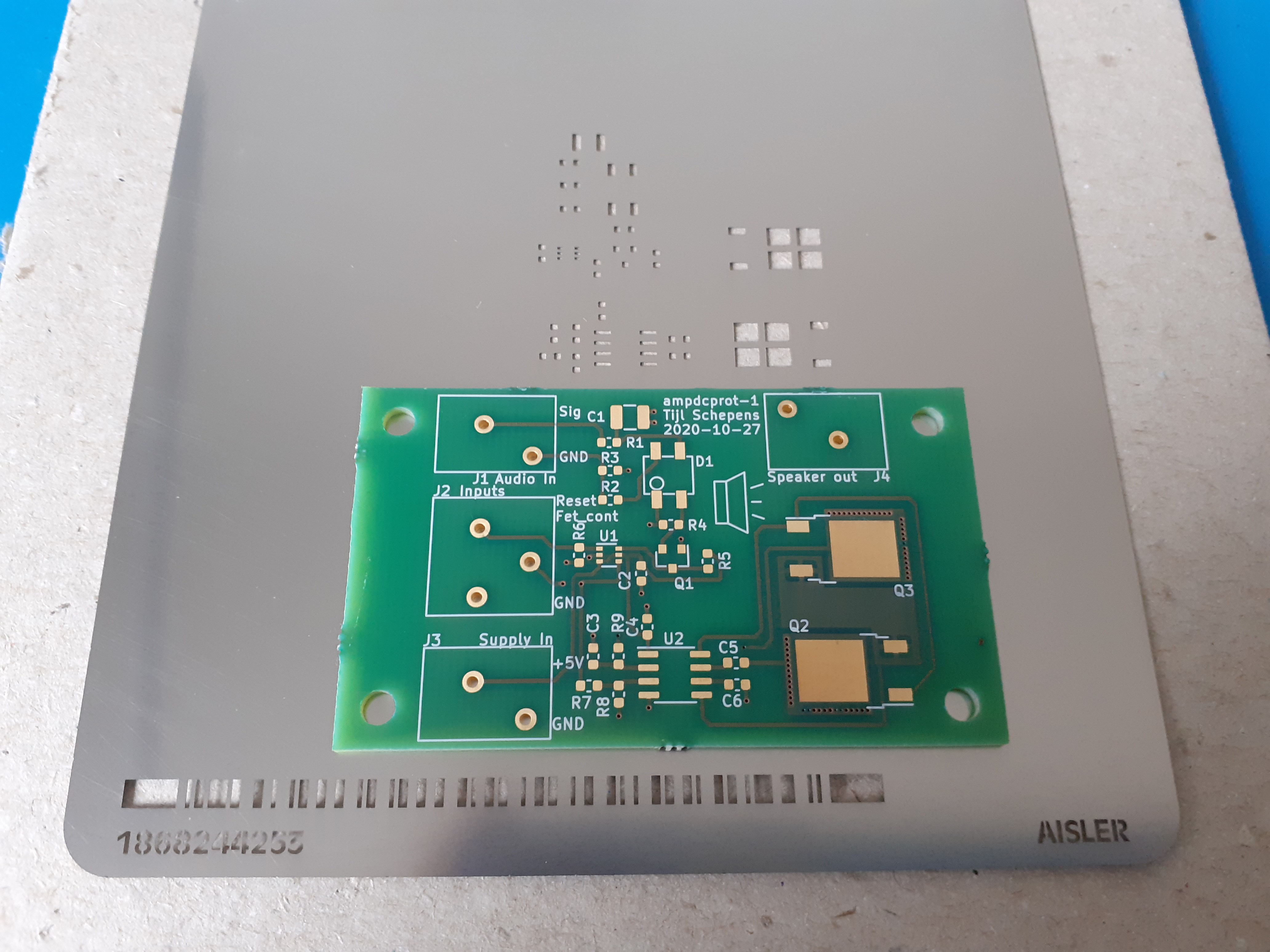
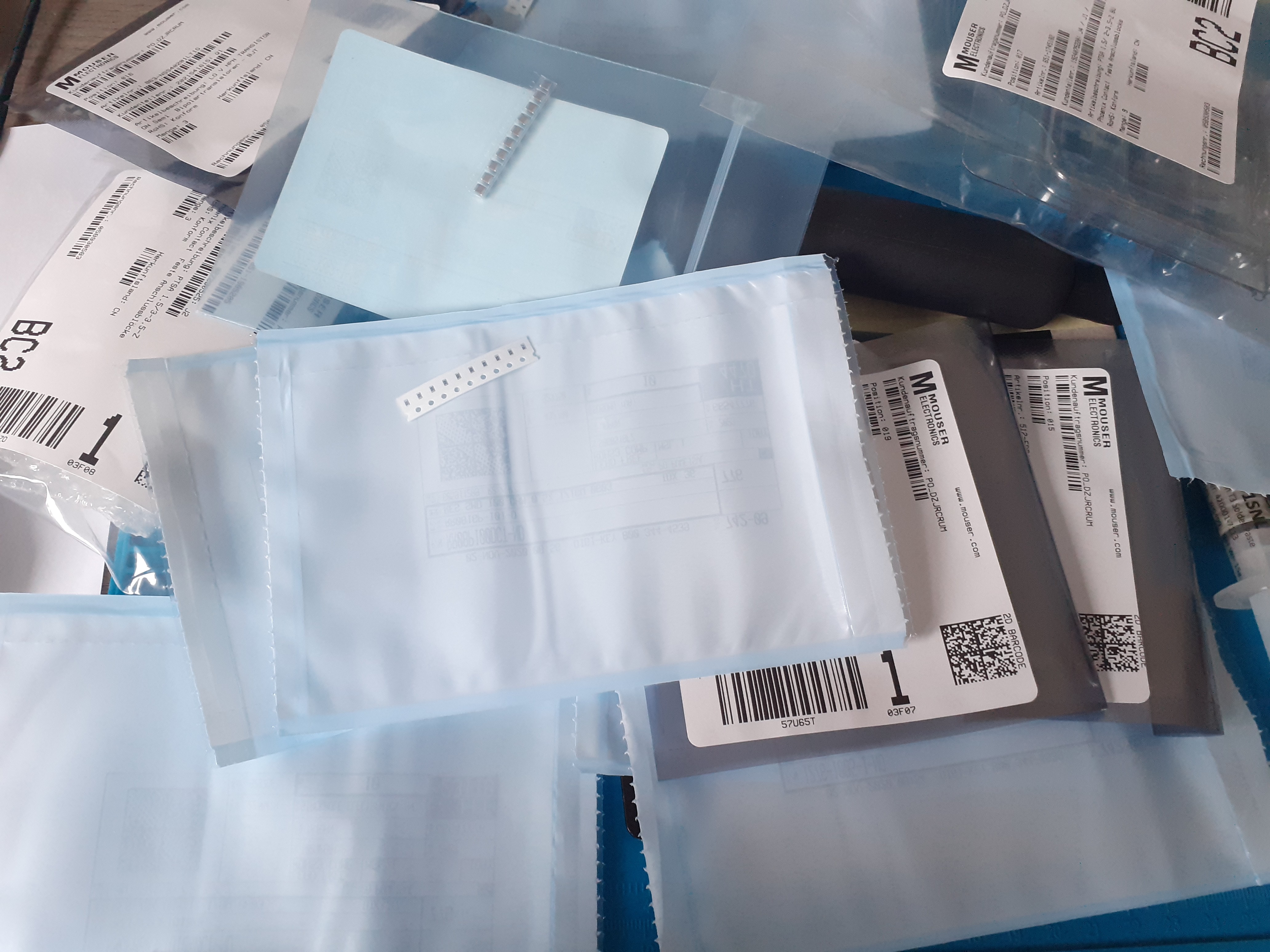 After receiving the PCBs and components from the good people at
After receiving the PCBs and components from the good people at 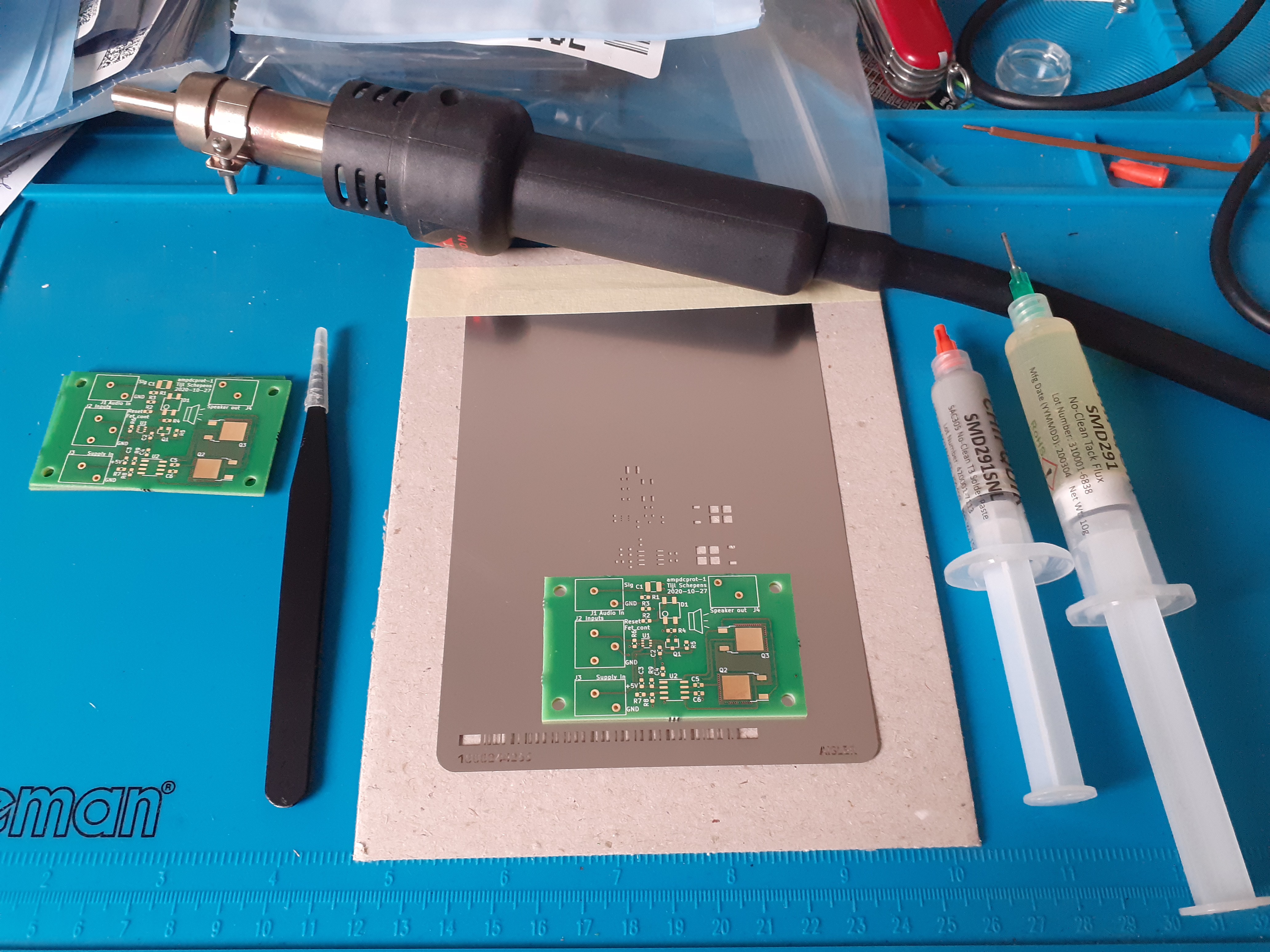 Applying solder paste and reflowing everything.
Applying solder paste and reflowing everything.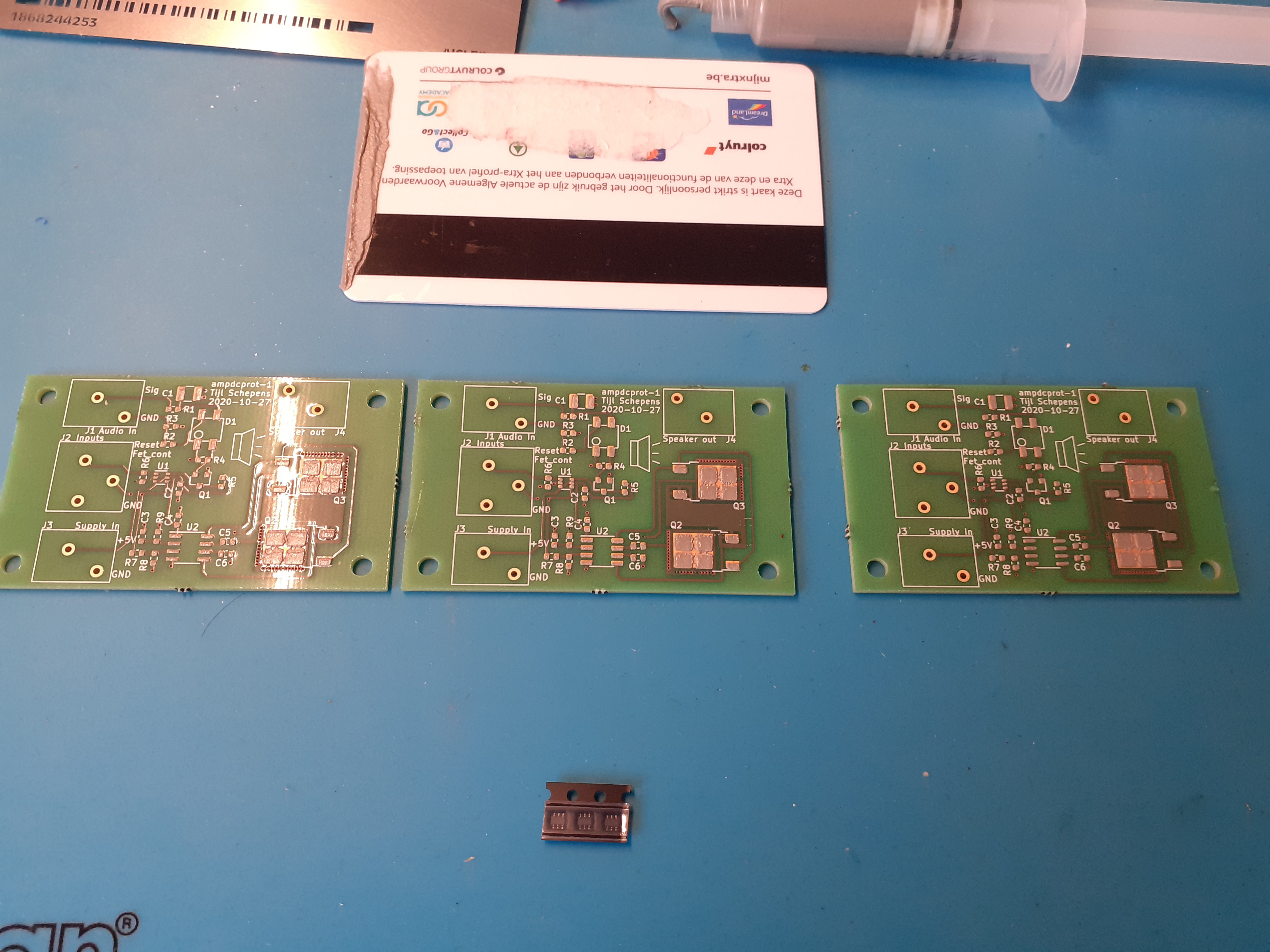
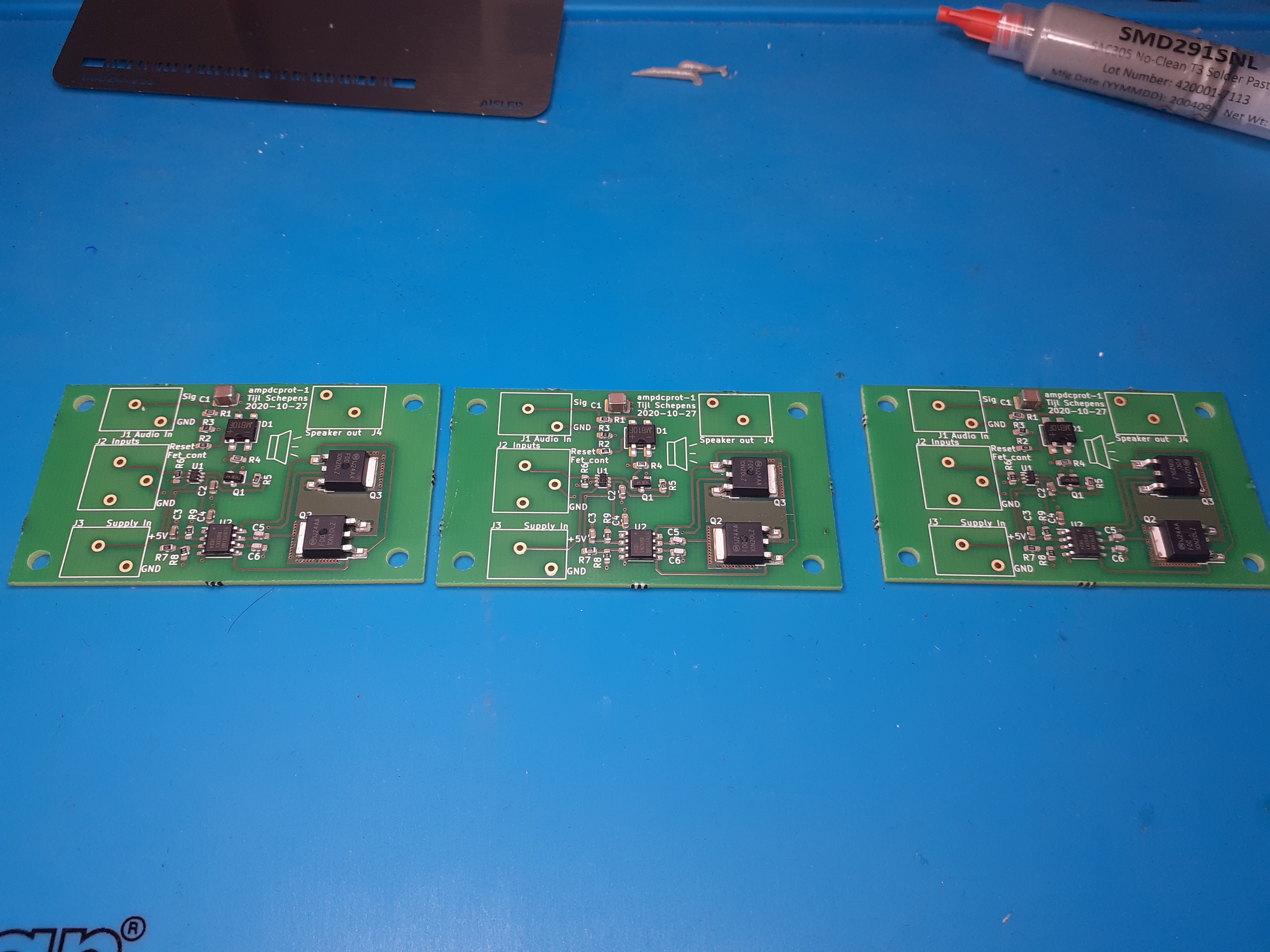 For the connectors it seems that I made a mistake. I think I ordered the wrong ones as my footprint matches the datasheet.
For the connectors it seems that I made a mistake. I think I ordered the wrong ones as my footprint matches the datasheet.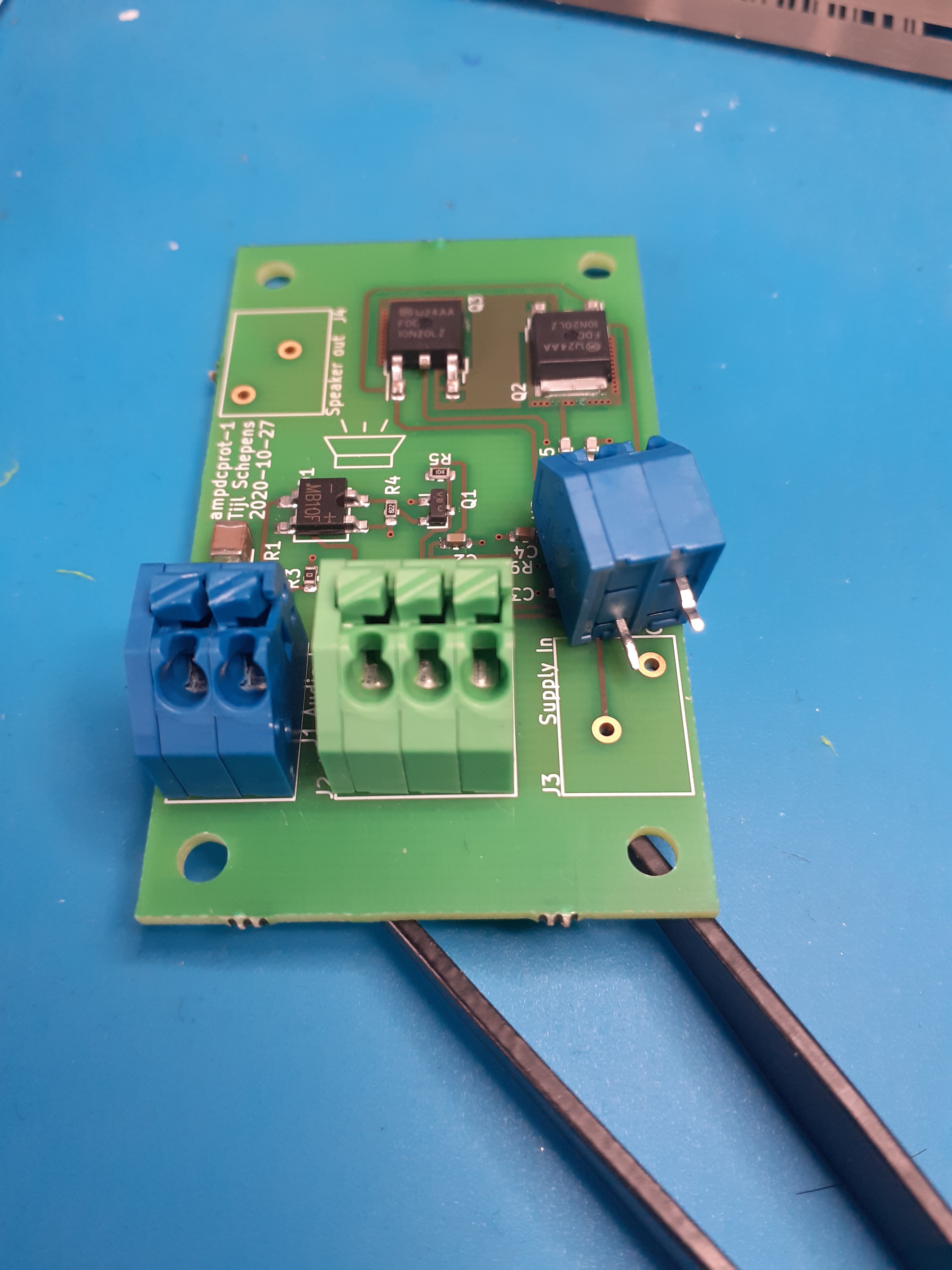 The pins of the connector are swapped. So they do not fit...
The pins of the connector are swapped. So they do not fit...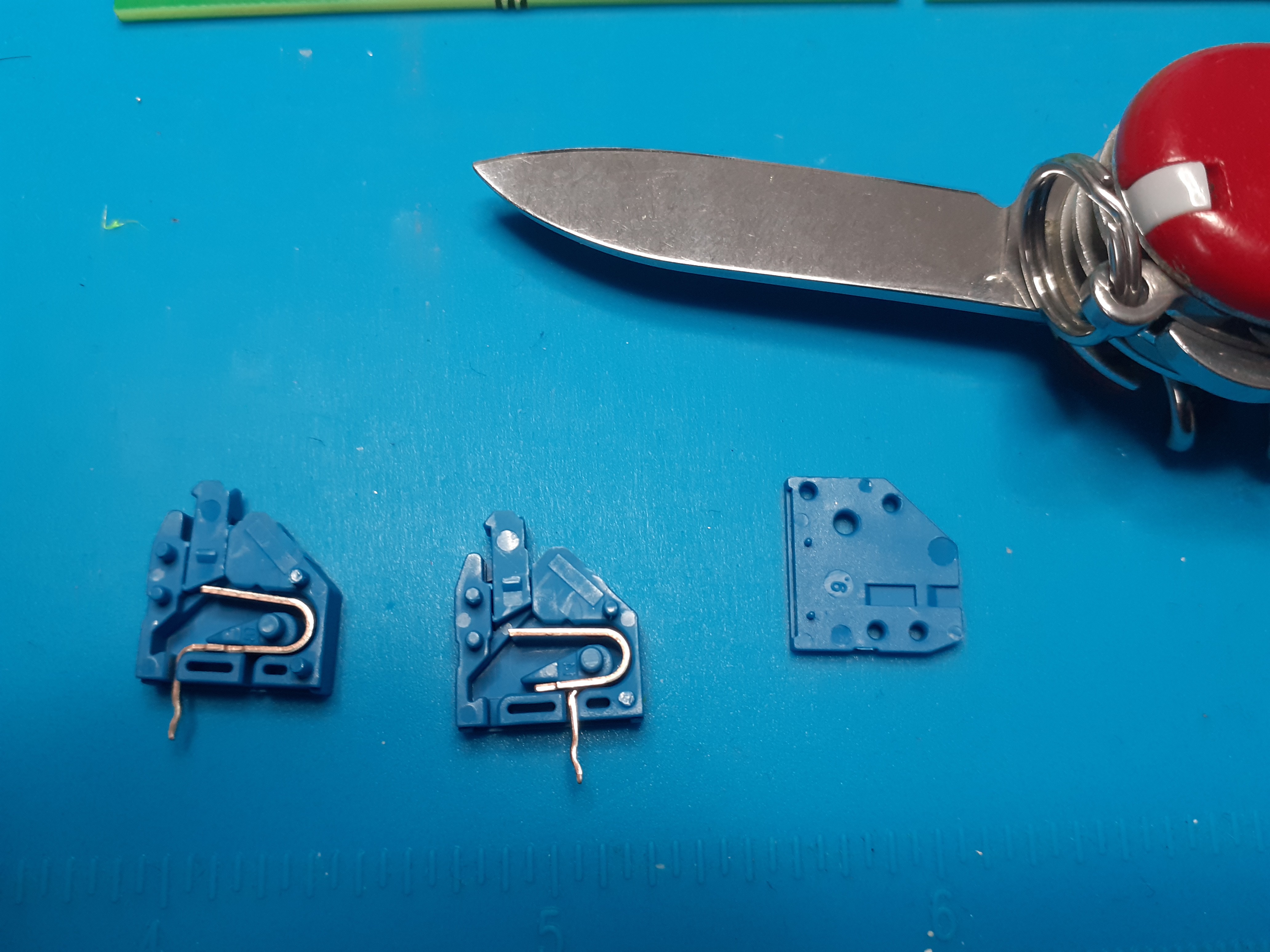 Now that the three parts of the connector are loose, we can just swap the pins. That way they fit into our connector footprint!
Now that the three parts of the connector are loose, we can just swap the pins. That way they fit into our connector footprint!